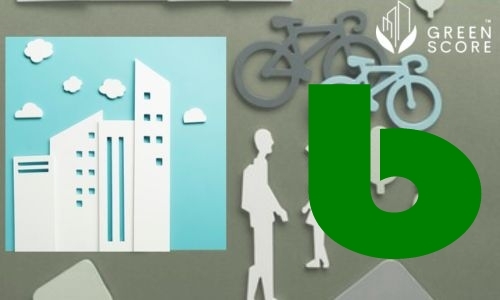Understanding the Structural Benefits of Aluminum in High-Rise Building Facades
Aluminum has become a popular choice for high-rise building facades due to its numerous structural benefits. Understanding these advantages can help architects, engineers, and developers make informed decisions when designing and constructing tall buildings.
The Lightweight Advantage of Aluminum
One key benefit of using aluminum in high-rise building facades is its lightweight nature. Compared to other building materials like steel or concrete, aluminum is significantly lighter, yet still strong and durable. This lightweight quality reduces the overall load placed on the building's structure, leading to potential cost savings during construction and throughout the life of the building. It also allows for easier installation and maintenance, as contractors can work with lighter materials that are easier to maneuver.
Corrosion Resistance and Durability
In addition to being lightweight, aluminum is highly resistant to corrosion and weathering. This is crucial for high-rise buildings, which are constantly exposed to the elements. Aluminum naturally forms a protective oxide layer when exposed to air, which helps prevent rust and deterioration. This means that aluminum building facades require minimal maintenance and have a longer lifespan compared to other materials that may degrade over time. This durability makes aluminum a cost-effective choice for long-term building projects.
Design Flexibility and Versatility
Another structural benefit of aluminum in high-rise building facades is its versatility. Aluminum can be easily molded and shaped into various sizes and configurations, allowing architects to create unique and complex designs. Whether it's curved, angled, or perforated panels, aluminum can be customized to meet the aesthetic and functional requirements of any building project. This flexibility in design is especially important for high-rise buildings, which often have intricate facades that contribute to the overall visual appeal of the structure.
Sustainability and Environmental Benefits
Furthermore, aluminum is a sustainable material that can be recycled and reused, making it an environmentally friendly choice for high-rise building facades. By choosing aluminum, architects and developers can reduce their carbon footprint and contribute to a more sustainable construction industry. This aligns with the growing trend towards green building practices and sustainable design, as more and more clients are looking for environmentally friendly solutions for their projects.
Conclusion: The Advantages of Aluminum in High-Rise Building Facades
Overall, understanding the structural benefits of aluminum in high-rise building facades can lead to better design decisions and more efficient construction processes. From its lightweight nature and corrosion resistance to its versatility and sustainability, aluminum offers a range of advantages that make it an ideal choice for tall building projects. By incorporating aluminum into their designs, architects and developers can create visually striking and structurally sound high-rise buildings that stand the test of time.
https://prancebuilding.com/Understanding the Structural Benefits of Aluminum in High-Rise Building Facades
Aluminum has become a popular choice for high-rise building facades due to its numerous structural benefits. Understanding these advantages can help architects, engineers, and developers make informed decisions when designing and constructing tall buildings.
The Lightweight Advantage of Aluminum
One key benefit of using aluminum in high-rise building facades is its lightweight nature. Compared to other building materials like steel or concrete, aluminum is significantly lighter, yet still strong and durable. This lightweight quality reduces the overall load placed on the building's structure, leading to potential cost savings during construction and throughout the life of the building. It also allows for easier installation and maintenance, as contractors can work with lighter materials that are easier to maneuver.
Corrosion Resistance and Durability
In addition to being lightweight, aluminum is highly resistant to corrosion and weathering. This is crucial for high-rise buildings, which are constantly exposed to the elements. Aluminum naturally forms a protective oxide layer when exposed to air, which helps prevent rust and deterioration. This means that aluminum building facades require minimal maintenance and have a longer lifespan compared to other materials that may degrade over time. This durability makes aluminum a cost-effective choice for long-term building projects.
Design Flexibility and Versatility
Another structural benefit of aluminum in high-rise building facades is its versatility. Aluminum can be easily molded and shaped into various sizes and configurations, allowing architects to create unique and complex designs. Whether it's curved, angled, or perforated panels, aluminum can be customized to meet the aesthetic and functional requirements of any building project. This flexibility in design is especially important for high-rise buildings, which often have intricate facades that contribute to the overall visual appeal of the structure.
Sustainability and Environmental Benefits
Furthermore, aluminum is a sustainable material that can be recycled and reused, making it an environmentally friendly choice for high-rise building facades. By choosing aluminum, architects and developers can reduce their carbon footprint and contribute to a more sustainable construction industry. This aligns with the growing trend towards green building practices and sustainable design, as more and more clients are looking for environmentally friendly solutions for their projects.
Conclusion: The Advantages of Aluminum in High-Rise Building Facades
Overall, understanding the structural benefits of aluminum in high-rise building facades can lead to better design decisions and more efficient construction processes. From its lightweight nature and corrosion resistance to its versatility and sustainability, aluminum offers a range of advantages that make it an ideal choice for tall building projects. By incorporating aluminum into their designs, architects and developers can create visually striking and structurally sound high-rise buildings that stand the test of time. https://prancebuilding.com/










